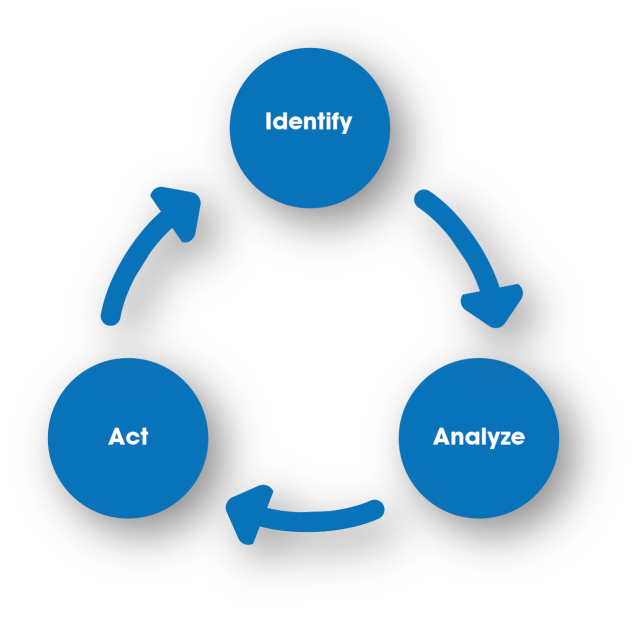
If you Google performance measurements, you’ll get more than 21 million hits. Hence, there is a huge amount of interest in performance measurements. As a researcher who has spent the last ten years of my life diving deep into these matters, I often get the question from people I meet – “what is the best measurement”?
To their disappointment my answer isn’t that simple. Performance measurements can either be used to monitor and follow up on past activities, or be used to learn and to predict a certain result. The former is called lagging indicators and the latter is called leading indicators. Lagging indicators measure the result of already performed actions while leading indicators measure the factors that impact the result. Leading indicators can thus be used to drive a certain behavior or change the direction.
A challenge for many organizations today is to find leading indicators when the time between performing actions and seeing the effect of them is too long. Another complexity is that a measurement that is lagging for one stakeholder can be leading for another, e.g. learning that the project is one month late can be a leading indicator for the project owner while lagging for the project manager. In general, leading indicators are important because they not only make us work more proactively but also stimulate learning, and this makes us more successful in our project execution.
Many project organizations have an abundance of performance measurements to report to stakeholders external to the project team (lagging). The steering committee needs economical reporting, following up on the critical dimensions of time and cost. It is common to get stuck in measuring what is easy to quantify, but in a non-repetitive environment such as today’s fast changing world, these measurements become lagging per definition. Quantifying a time delay or deviating costs is rather easy compared to measuring the underlying reason behind it (leading).
We also need a more structured way of connecting the leading and lagging indicators, to systematically find the relationship and learn what works best based on the given circumstances/conditions. By doing this we ensure higher performance.
By focusing on what research says are important success factors for performance, and start measuring those, you’ll start measuring what really matters and enables your organization to drive in the right direction. And by measuring, analyzing and acting on success factors you create the conditions for high performance.
This puts us in front of another challenge. How are we supposed to measure this? As explained in my last blog post, new complex challenges places new demands on leadership and organizational structure. Therefore, we need new ways to think around measurements. If you want to dive deeper into this, find my doctorial thesis here, free to download. But if you only have a few minutes, I’ll spare you the time and quickly cover the important parts here.
To be able to cope with the new, tougher demands we need to address these by measuring things that are connected to important success factors. If we can measure this, we can also see if we have the right conditions to help our employees and teams to excel.
Researchers have for a long time focused on determining what the success factors for high performing projects are and validated them. But many people working with performance measurements in organizations have been stuck in the traditional view of how to use measurements (e.g. economic monitoring), and haven’t studied what creates conditions for teams to perform.
If we focus on leading indicators, we can make performance measurements everyone’s business, since it’s not just about reporting to someone else anymore. Rather, it is about to continuously improve the team’s way of working, which will in turn raise the chances of improving performance and delivering great results.
The first step is to start with what you want to achieve. If you want to develop a dynamic and high performing organization, you must have measurements that support that. This means that a systematic way of finding and creating the best solutions for the project team are not there, as well as measurements that don’t require too much effort from employees, and are connected to factors that support the team performance. The measurements need to be done in real-time and be cost and time efficient.
I’ll give you an example of a success factor that is of high importance for successful projects, but one that almost no project teams and managers I’ve met have actually measure. It’s the goal clarity. The research literature on success factors for projects stress goal clarity as the most critical success factor. A project with a tight time plan where the team members perceive the project goals as unclear will most certainly fail. However, if this is spotted early there is still time to act and improve the situation.
The goals then need to be clarified, or team members are not aware if they are doing the right things and this is especially important in order to know whether we are moving towards that goal or not. If we could measure this and know in real-time when the conditions for success aren’t there, we can correct the deviations and thereby make sure that we deliver the right things at the right time.
We have to start to continuously measure success factors, like goal clarity, in order to get insights of what is needed or missing in the project team. These measurements are very different from traditional measurements and functions to complement them, since they support team leadership to be developed in a systematic way.
Based on our research we have made it possible to get continuous access to real time data related to the current status of important success factors. This has a great potential in developing the leadership skills in an organization, and will move us towards a more data-driven team leadership style based on systematic measurements that provide actionable insights. Adding this to your leadership will help engage your team in finding possible improvements and solutions to perform better based on the current situation. And then, continuously follow up changes in the data and know whether or not the team is moving in the right direction.

Besides all the benefits with working with data-driven team leadership, this development is also very engaging for the team. When almost everything else is data driven today, organizations cannot afford not to work with data driven leadership as well.
I’m interested to hear your thoughts about leading indicators as well as performance measurements in general, and if you are interested in learning more how we work with these challenges just leave a comment below or send me an email to sc@prindit.com.
/Stefan Cedergren, PhD
CEO and founder of Prindit